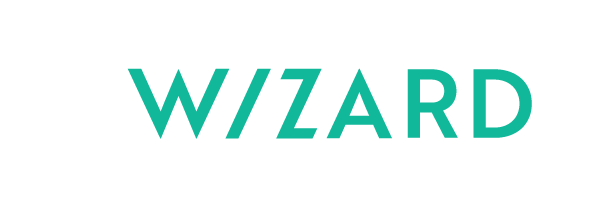Creating an eLearning course is an exciting and effective way to share knowledge, engage learners, and build a scalable education or training platform. But if you’re new to the process, it can feel overwhelming. From content creation to technical setup, there are many factors to consider. In this blog post, we’ll walk you through the key steps to get started with building a successful eLearning course.
1. Define Your Course Goals and Audience
Before you begin developing your eLearning course, defining your learning objectives and identifying your target audience is important. Ask yourself the following questions:
-
What do I want learners to achieve by the end of the course?
-
Who are my learners? (Are they beginners, professionals, or students?)
-
What problems or pain points am I solving for my audience?
By clearly outlining your goals, you can structure your course to deliver content that resonates with your learners and provides value. Knowing your audience helps you create relevant materials that engage and meet their specific needs. These are also the first two questions we ask our clients. Learning objectives are the core of learning, they pave the way for the right methodology and help us, elearning creators, to create a good learning structure.
2. Choose a Topic and Create a Course Outline
Once you’ve identified your objectives and audience, the next step is choosing a course topic that fits within your expertise and aligns with your audience’s interests. Your topic should be focused and specific to avoid overwhelming learners with too much information.
After selecting the topic, create a course outline that maps out the structure of your content. Break the course down into modules or lessons, and think about the logical progression of knowledge. For example:
-
Introduction to the topic
-
Key concepts and theories
-
Practical applications
-
Case studies or examples
-
Assessments or quizzes
A clear outline ensures your content flows logically and is easy to follow. This is where we, as experts, can help you. Subject matter experts (SME) often get lost in all the content they want to present within the course, unintentionally creating an outline with too many lessons or information, making the course too long or too big. We help you to prioritize the content and divide between “needs to know vs nice to know”.
3. Select the Right eLearning Platform
To host and deliver your course, you’ll need to choose an eLearning platform. There are several platforms available, each with unique features. Some popular platforms, such as Udemy, Teachable, Thinkific or Moodle, are generally easy to use with good pricing options. There are many LMS (Learning Management System) platforms, suitable for small businesses or big corporations (Docebo, TalentLMS, 360 Learning, Absorb LMS etc) which offer insightful analytics and tracking of learners’ progress.
There is an option of creating a customized eLearning platform od WordPress using a variety of plugins. Learning Wizard has created several of those platforms and you can check some of them here or here.
Consider your needs (branding, pricing, marketing tools, etc.) when selecting a platform to ensure it aligns with your course delivery goals.
You can create your own customized eLearning platform
4. Create Engaging Content
Creating content, or the development phase, for your eLearning course is arguably the most important step. Engaging content will keep learners motivated and help them retain the information. Here’s are some tips on how to build effective eLearning content:
-
Use a mix of formats: Combine text, videos, images, infographics, and interactive quizzes to keep learners engaged.
-
Keep videos short and clear: Microlearning works well—short, focused lessons (3-10 minutes) are easier to digest.
-
Incorporate practical examples: Real-world examples and case studies help learners connect theory to practice.
-
Use visuals effectively: Charts, graphs, and diagrams can help explain complex concepts.
-
Include assessments: Quizzes and tests at the end of modules reinforce learning and help track progress.
Remember, the goal is to make the content interactive, engaging, and easy to follow. Avoid overwhelming learners with large blocks of text, too many images or colors. We always recommend going back to learning objectives and assessing how those objectives can be presented digitally. One important aspect of development is creativity – the ability to present complex, or even boring topics, in an interesting way using a method (video, image, interactive element etc.) to correspond with learners’ needs.
5. Record and Edit Course Videos
If your eLearning course includes video content (which we highly recommend), make sure your videos are high quality. You don’t need professional studio equipment, but clear audio, good lighting, and a stable camera setup are essential. Here are a few tips for recording and editing videos:
-
Use a script: Plan out what you’ll say in each video to stay focused and concise.
-
Record in a quiet, well-lit space: Good lighting and minimal background noise are critical for professional-looking videos.
-
Edit for clarity: Cut unnecessary pauses, add captions, and include slides or graphics to enhance understanding.
Elearning development companies such as Learning Wizard provides filming and editing as a part of our service, depending on the location. You can always hire a video making professionals to help out and make your videos look nice and proper.
6. Test Your Course
Before launching your course, it’s crucial to test it for any technical issues or areas where learners might get stuck. Ask colleagues or a small group of beta testers to go through the course, providing feedback on content quality, clarity, and overall user experience.
Take note of their feedback and make necessary adjustments to improve the course before it goes live.
Conclusion
Creating an eLearning course may seem like a big task, but by following a clear plan, you can build a course that’s engaging, impactful, and successful. This blog lists a simplified process of creation, but it is a good start for newcomers. Working closely with eLearning designers is always easier and make the process faster, especially if they have a lot of experience, as we do.




